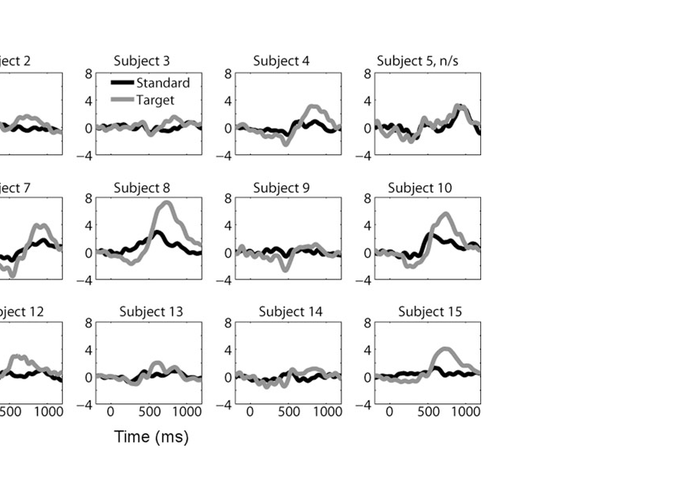Neural correlates of oddball detection in self-motion heading: a high-density event-related potential study of vestibular integration

Neural correlates of oddball detection in self-motion heading: a high-density event-related potential study of vestibular integration
Abstract
The perception of self-motion is a product of the integration of information from both visual and non-visual cues, to which the vestibular system is a central contributor. It is well documented that vestibular dysfunction leads to impaired movement and balance, dizziness and falls, and yet our knowledge of the neuronal processing of vestibular signals remains relatively sparse. In this study, high-density electroencephalographic recordings were deployed to investigate the neural processes associated with vestibular detection of changes in heading. To this end, a self-motion oddball paradigm was designed. Participants were translated linearly 7.8 cm on a motion platform using a one second motion profile, at a 45° angle leftward or rightward of straight ahead. These headings were presented with a stimulus probability of 80–20 %. Participants responded when they detected the infrequent direction change via button-press. Event-related potentials (ERPs) were calculated in response to the standard (80 %) and target (20 %) movement directions. Statistical parametric mapping showed that ERPs to standard and target movements differed significantly from 490 to 950 ms post-stimulus. Topographic analysis showed that this difference had a typical P3 topography. Individual participant bootstrap analysis revealed that 93.3 % of participants exhibited a clear P3 component. These results indicate that a perceived change in vestibular heading can readily elicit a P3 response, wholly similar to that evoked by oddball stimuli presented in other sensory modalities. This vestibular-evoked P3 response may provide a readily and robustly detectable objective measure for the evaluation of vestibular integrity in various disease models.